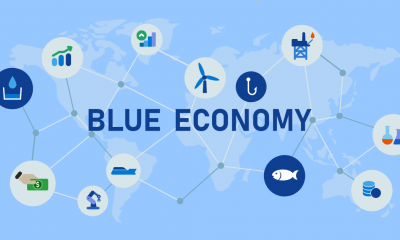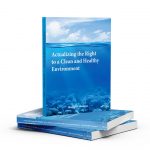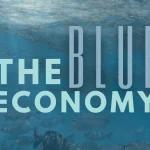By Hon. Prof. Kariuki Muigua, OGW, PhD, C.Arb, FCIArb is a Professor of Environmental Law and Dispute Resolution at the University of Nairobi, Member of Permanent Court of Arbitration, Leading Environmental Law Scholar, Respected Sustainable Development Policy Advisor, Top Natural Resources Lawyer, Highly-Regarded Dispute Resolution Expert and Awardee of the Order of Grand Warrior (OGW) of Kenya by H.E. the President of Republic of Kenya. He is the Academic Champion of ADR 2024, the African ADR Practitioner of the Year 2022, the African Arbitrator of the Year 2022, ADR Practitioner of the Year in Kenya 2021, CIArb (Kenya) Lifetime Achievement Award 2021 and ADR Publisher of the Year 2021 and Author of the Kenya’s First ESG Book: Embracing Environmental Social and Governance (ESG) tenets for Sustainable Development” (Glenwood, Nairobi, July 2023) and Kenya’s First Two Climate Change Law Book: Combating Climate Change for Sustainability (Glenwood, Nairobi, October 2023), Achieving Climate Justice for Development (Glenwood, Nairobi, October 2023) and Promoting Rule of Law for Sustainable Development (Glenwood, Nairobi, January 2024)*
All water resources in Kenya are vested in the state where the Ministry of Water and Irrigation is responsible for creating institutions to manage water resources and provide water services. The Water Act 2016 provides that every water resource is vested in and held by the national government in trust for the people of Kenya.
The Water Resources Authority established in Section 11(l) of the Water Act 2016 is to serve as an agent of the national government and regulate the management and use of water resources. The functions of the Authority include, inter alia, to: formulate and enforce standards, procedures and Regulations for the management and use of water resources and flood mitigation; regulate the management and use of water resources; enforce Regulations made under this Act; receive water permit applications for water abstraction, water use and recharge and determine, issue, vary water permits; and enforce the conditions of those permits; collect water permit fees and water use charges; determine and set permit and water use fees; provide information and advice to the Cabinet Secretary for formulation of policy on national water resource management, water storage and flood control strategies; coordinate with other regional, national and international bodies for the better regulation of the management and use of water resources; and advise the Cabinet Secretary generally on the management and use of water resources.
The Water Act 2016 also establishes the National Water Harvesting and Storage Authority whose functions and powers shall be to- undertake on behalf of the national government, the development of national public water works for water resources storage and flood control; maintain and manage national public water works infrastructure for water resources storage; collect and provide information for the formulation by the Cabinet Secretary of the national water resources storage and flood control strategies; develop a water harvesting policy and enforce water harvesting strategies: undertake on behalf of the national government strategic water emergency interventions during drought; and advise the Cabinet Secretary on any matter concerning national public water works for water storage and flood control.
Section 29(l) of the Water Act 2016 provides that Water Resource Users Associations may be established as associations of water resource users at the sub-basin level in accordance with Regulations prescribed by the Authority. A Water Resource Users Association should be a community based association for collaborative management of water resources and resolution of conflicts concerning the use of water resources. Section 25 tasks the Cabinet Secretary to establish a Basin Water Resources Committee for each respective basin area which shall be responsible for the management of the water resources within a respective basin area.
The Cabinet Secretary may, by notice in the Gazette, establish one or more waterworks development agencies and define the geographical area of jurisdiction of each such agency. The powers and functions of the water works development agency shall be to- undertake the development, maintenance and management of the national public water works within its area of jurisdiction; and operate the waterworks and provide water services as a water service provider, until such a time as responsibility for the operation and management of the waterworks are handed over to a county government, joint committee, authority of county governments or water services provider within whose area of jurisdiction or supply the waterworks is located.
Section 69(1) of the Act provides that as soon as possible, following the commissioning of the waterworks, the waterworks development agency should enter into an agreement with the county government, the joint committee or authority of the county governments within whose area of jurisdiction the water works is located, jointly with the water service provider within whose area of supply the water works are located for the use by the joint committee, authority or water services provider, as the case may be, of the water works to provide water services.
Section 70(1) of the Water Act 2016 establishes the Water Services Regulatory Board whose principal object is to protect the interests and rights of consumers in the provision of water services. Section 64(l) of the Water Act 2016 provides that the Cabinet Secretary should, within one year of the commencement of this Act and every five years thereafter, following public participation, formulate a Water Services Strategy.
The object of the Water Strategy shall be to provide the Government’s plans and programs for the progressive realization of the right of every person in Kenya to water. The Water Strategy should contain, among other things, details of-existing water services; the number and location of persons who are not provided with a basic water supply and basic sewerage services; standards for the progressive realisation of the right to water; and a resource mobilization strategy for the implementation of the plans.
The Cabinet Secretary should in consultation with county governments, provide a national water sector investment and financing plan aggregated from the county government plans which should include, among other details, the time frames for the plans and an investment programme based on the investment plans. The basin area water resources management strategy should facilitate the establishment and operation of Water Resources Users Associations.
The Basin Water Resources Committees may contract water resource users associations as agents to perform certain duties in water resource management. Upon the designation of a basin area, the Basin Area Water Authority is required to prescribe requirements and a time frame for resources the formulation of a basin area water resources management strategy. The basin area water resources management strategy should be formulated by a basin water resources committee in consultation with the Authority and the county governments whose areas of jurisdiction lie within the basin area.
A basin area water resources management strategy should-be consistent with the national water resources policy; put in place measures to fulfill the water resource quality objectives for each class of water resource in the basin area; describe the measures to be put in place for the sustainable management of water resources of the basin area; contain a water allocation plan for the water resources of the basin area; provide systems and guidelines to enable the users of water resources within the basin area to participate in managing the water resources of the basin area; and provide a strategy for financing the management of the water resources of the basin area.
A basin water resources committee should consist of- not less than four and not more than seven members appointed by the Authority in consultation with the Cabinet Secretary; and a representative of each county government whose area falls within the basin appointed by the appointing authority after approval by the county assembly. The persons appointed to the Basin Water Resources Committee must be residents of the respective basin area and should include- a representative of a ministry responsible for matters relating to water resources; a representative of farmers or pastoralists within the basin area concerned; a representative of a public benefits organisation engaged in water resources management programmes within the basin area concerned; and a representative of the business community operating within the basin area concerned.
The powers and functions of the Basin Water Resources Committee shall be: to advise the Authority and county governments, at the respective regional office, concerning- conservation, use and apportionment of water resources; the grant, adjustment, cancellation or variation of any permit; protection of water resources and increasing the availability of water; annual reporting to the users of its services and the public on water issues and their performance within the basin area; collection of data, analyzing and managing the information system on water resources; review of the basin area water resources management strategy; facilitation of the establishment and operations of water resource user associations; flood mitigation activities; information sharing between the basin area and the Authority; the equitable water sharing within the basin area through water allocation plans; and any other matter related to the proper management of water resources.
The Water Act 2016 also provides that it shall be the duty of a licensee receiving trade effluent into its sewerage system to ensure that it has in place measures for the receipt and handling of the effluent without causing pollution of the environment; harm to human health; damage to the sewerage system: or a contravention of applicable laws or standards set by the Regulatory Board. A person should not discharge any trade effluent from any trade premises into the sewers of a licensee without the consent of the licensee.
In order to deal with disputes, the Act also establishes a Water Tribunal and the same is empowered to exercise the powers and functions set out in this Act and in particular to hear and determine appeals at the instance of any person or institution directly affected by the decision or order of the Cabinet Secretary, the Authority and Regulatory Board or of any person acting under the authority of the Cabinet Secretary, the Authority and Regulatory Board. In addition to the powers set out in subsection (l), the Tribunal has the power to hear and determine any dispute concerning water resources or water services where there is a business contract, unless the parties have otherwise agreed to an alternative dispute resolution mechanism.
A person aggrieved by a decision of the Tribunal may, within twenty-one days from the date of that decision, appeal to the Land and Environmental Court, established under article 162(2) of the Constitution on an issue of law. A decision of a water basin organization, the Authority, the Regulatory Board or the Tribunal against which no appeal has been preferred within thirty days from the date on which the decision was made, becomes binding on all parties.
This is an extract from Kenya’s First ESG Law Book: Embracing Environmental Social and Governance (ESG) tenets for Sustainable Development” (Glenwood, Nairobi, July 2023) by Hon. Prof. Kariuki Muigua, OGW, PhD, Professor of Environmental Law and Dispute Resolution, Senior Advocate of Kenya, Chartered Arbitrator, Kenya’s ADR Practitioner of the Year 2021 (Nairobi Legal Awards), ADR Lifetime Achievement Award 2021 (CIArb Kenya), African Arbitrator of the Year 2022, Africa ADR Practitioner of the Year 2022, Member of National Environment Tribunal (NET) Emeritus (2017 to 2023) and Member of Permanent Court of Arbitration nominated by Republic of Kenya and Academic Champion of ADR 2024. Prof. Kariuki Muigua is a foremost Environmental Law and Natural Resources Lawyer and Scholar, Sustainable Development Advocate and Conflict Management Expert in Kenya. Prof. Kariuki Muigua teaches Environmental Law and Dispute resolution at the University of Nairobi School of Law, The Center for Advanced Studies in Environmental Law and Policy (CASELAP) and Wangari Maathai Institute for Peace and Environmental Studies. He has published numerous books and articles on Environmental Law, Environmental Justice Conflict Management, Alternative Dispute Resolution and Sustainable Development. Prof. Muigua is also a Chartered Arbitrator, an Accredited Mediator, the Managing Partner of Kariuki Muigua & Co. Advocates and Africa Trustee Emeritus of the Chartered Institute of Arbitrators 2019-2022. Prof. Muigua is a 2023 recipient of President of the Republic of Kenya Order of Grand Warrior (OGW) Award for his service to the Nation as a Distinguished Expert, Academic and Scholar in Dispute Resolution and recognized among the top 5 leading lawyers and dispute resolution experts in Band 1 in Kenya by the Chambers Global Guide 2024 and was listed in the Inaugural THE LAWYER AFRICA Litigation Hall of Fame 2023 as one of the Top 50 Most Distinguished Litigation Lawyers in Kenya and the Top Arbitrator in Kenya in 2023.
References
Akech, J.M.M., ‘Governing Water and Sanitation in Kenya: Public Law, Private Sector Participation and The Elusive Quest for A Suitable Institutional Framework,’ Paper prepared for the workshop entitled ‘Legal Aspects of Water Sector Reforms’ to be organised in Geneva from 20 to 21 April 2007 by the International Environmental Law Research Centre (IELRC) in the context of the Research partnership 2006-2009 on water law sponsored by the Swiss National Science Foundation (SNF), p. 6. Available at http://www.ielrc.org/activities/workshop_0704/content/d0702.pdf [Accessed on 5/01/2017].
Budds, J. & McGranahan, G., ‘Are the debates on water privatization missing the point? Experiences from Africa, Asia and Latin America,’ Environment & Urbanization, Vol. 15, No. 2, October 2003, pp. 87-114 at p. 87.
Concern Worldwide Kenya, ‘Five year ASAL Water Hygiene and Sanitation Strategy for Marsabit County 2013 – 2018,’ (Dublin Institute of Technology), p.4.
Constitution of Kenya 2010 (Government Printer, 2010, Nairobi).
Gorre-Dale, E., ‘The Dublin Statement on Water and Sustainable Development’, Environmental Conservation, Vol. 19, No.2, 1992, p. 181. Available at https://www.cambridge.org/core/services/aop-cambridgecore/content/view/843EB9B98E0F63A3DA36041F7BF3BF16/S0376892900030733a.pdf/div -class-title-the-dublin-statement-on-water-and-sustainable-development-div.pdf [Accessed on 05/10/2016].
Hellum, A., et al, ‘The Human Right to Water and Sanitation in a Legal Pluralist Landscape: Perspectives of Southern and Eastern African Women,’ in Hellum A., et al (eds), Water is Life: Women’s Human Rights in National and Local Water Governance in Southern and Eastern Africa, (Weaver Press, Harare, 2015), p. 10.
Huitema, D., et al, ‘Adaptive Water Governance: Assessing the Institutional Prescriptions of Adaptive (Co-)Management from a Governance Perspective and Defining a Research Agenda,’ Ecology and Society, Vol. 14, No.1, pp.1-26 at p. 5.
K’Akumu, O.A., ‘Toward effective governance of water services in Kenya,’ Water Policy, Vol. 9, 2007, pp.529–543 at p. 530.
Mirosa, O. & Harris, L.M., ‘Human Right to Water: Contemporary Challenges and Contours of a Global Debate,’ Antipode, Vol. 44, No. 3, 2012, pp. 932-949 at p. 935.
Moraa, H., Water governance in Kenya: Ensuring Accessibility, Service delivery and Citizen Participation, (iHub Research, July 2012), p.9. Available at http://ihub.co.ke/ihubresearch/uploads/2012/july/1343052795__537.pdf.
Nkonya, L.K., ‘Realizing the Human Right to Water in Tanzania,’ op cit. p. 25. 10 United Nations, General Comment No. 15: The Right to Water (Arts. 11 and 12 of the Covenant), Adopted at the Twenty-ninth Session of the Committee on Economic, Social and Cultural Rights, on 20 January 2003 (Contained in Document E/C.12/2002/11).
Nkonya, L.K., ‘Realizing the Human Right to Water in Tanzania,’ op cit. p. 26. 85 The United Nations General Assembly Resolution, the human right to water and sanitation, A/RES/64/292, July 2010.
Perry, C.J., et al, Water as an Economic Good: A Solution, or a Problem? Research Report 14, (International Irrigation Management Institute, Colombo, 1997), p. 1. 49.
Tortajada, C., ‘Water Governance: Some Critical Issues,’ International Journal of Water Resources Development, Vol. 26, No.2, 2010, pp.297-307, p. 298.
Transforming our world: the 2030 Agenda for Sustainable Development.
UN Committee on Economic, Social and Cultural Rights (CESCR), General Comment No. 15: The Right to Water (Arts. 11 and 12 of the Covenant), 20 January 2003, E/C.12/2002/11. Adopted at the Twenty-ninth Session of the Committee on Economic, Social and Cultural Rights, on 20 January 2003 (Contained in Document E/C.12/2002/11).
UN Water, ‘Climate Change Adaptation: The Pivotal Role of Water,’ available at http://www.unwater.org/downloads/unw_ccpol_web.pdf [Accessed on 05/2/2016].
United Nations Research Institute for Social Development, ‘Commercialization, Privatization and Universal Access to Water,’ available at http://www.unrisd.org/80256B3C005BB128/(httpProjects)/E8A27BFBD688C0A0C1 256E6D0049D1BA [ Accessed on 5/1/2017].
United Nations Research Institute for Social Development, ‘Commercialization, Privatization and Universal Access to Water,’ available at http://www.unrisd.org/80256B3C005BB128/(httpProjects)/E8A27BFBD688C0A0C1256E 6D0049D1BA.
United Nations, ‘International Decade for Action ‘water for Life 2005-2015’: Water and sustainable development,’ available at http://www.un.org/waterforlifedecade/water_and_sustainable_development.shtml [Accessed on 05/10/2016].
United Nations, The Dublin Statement on Water and Sustainable Development, Adopted January 31, 1992 in Dublin, Ireland, International Conference on Water and the Environment. Dublin, Ireland, International Conference on Water and the Environment, available at http://un-documents.net/h2o-dub.htm [Accessed on 05/10/2016].
Water Act 2016, Laws of Kenya (Government Printer, 2010, Nairobi).

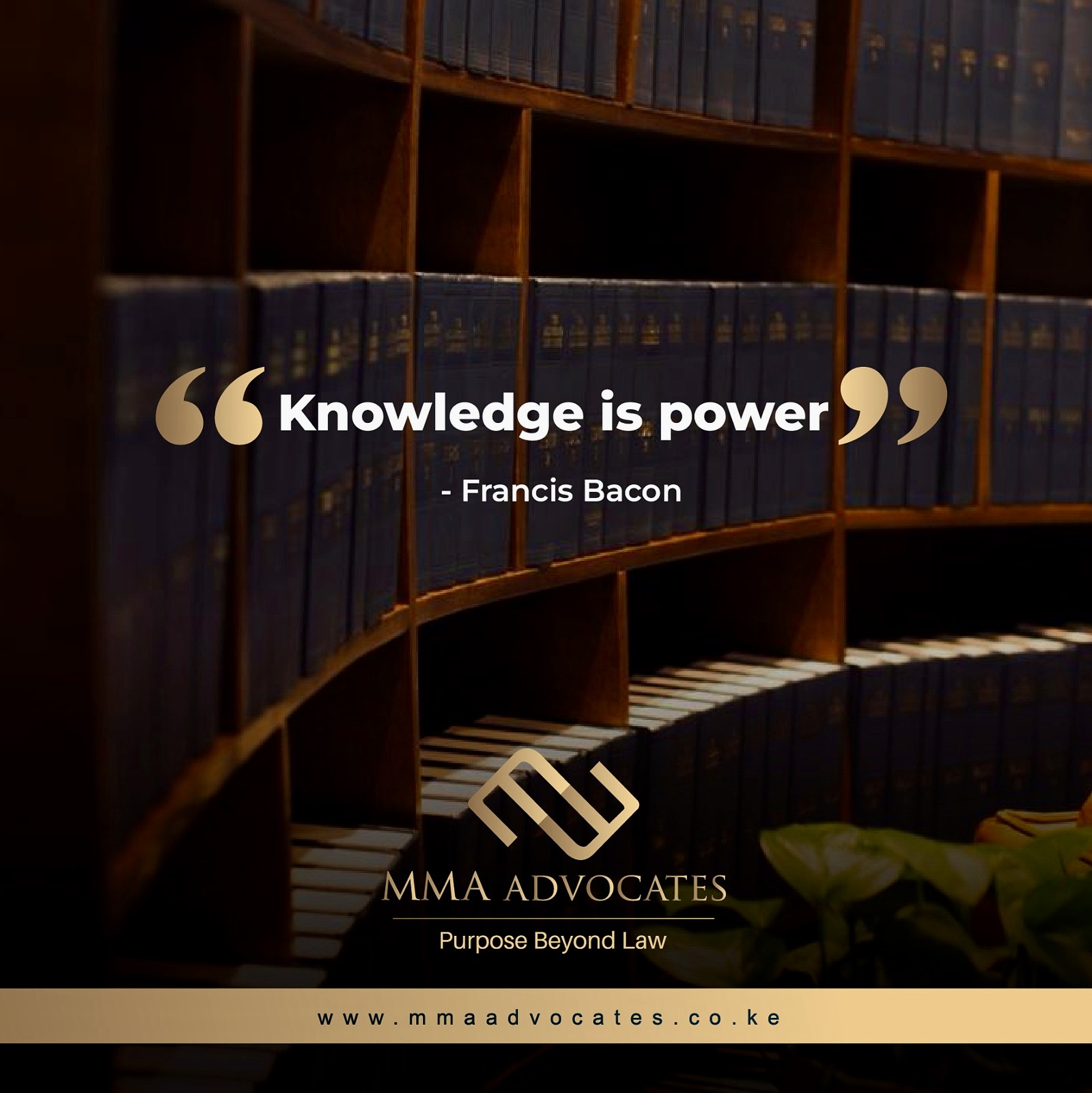



 Lawyers1 year ago
Lawyers1 year ago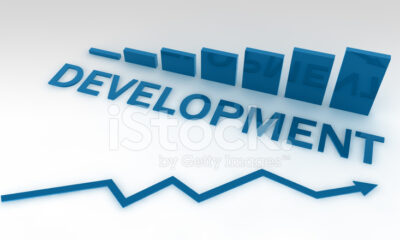
 News & Analysis3 years ago
News & Analysis3 years ago
 News & Analysis3 years ago
News & Analysis3 years ago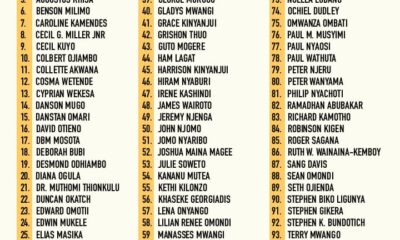
 Lawyers1 year ago
Lawyers1 year ago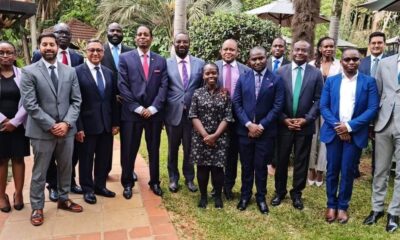
 News & Analysis2 years ago
News & Analysis2 years ago
 News & Analysis1 year ago
News & Analysis1 year ago
 News & Analysis3 years ago
News & Analysis3 years ago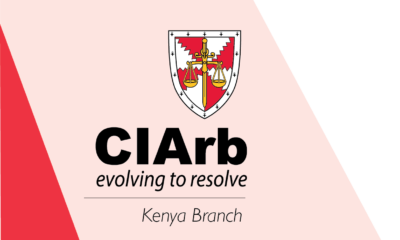
 News & Analysis1 year ago
News & Analysis1 year ago













